Are you ready to enjoy more birds and fewer biting bugs in your yard? Give these 7 ways to attract mosquito-eating birds a try and see what a difference they can make.
5 Ways to Attract Mosquito Eating Birds:
1. Provide a water source: A bird bath or fountain will give birds a place to drink and bathe.
2. Offer food: Feeders that dispense seeds, suet, or insects will bring birds to your yard.
3. Plant trees and shrubs: Berries and other fruit will provide food for the birds all year long.
4. Install a nest box: If you have the space, provide a place for birds to build their nests and raise their young.
5. Hang a wind chime: Chimes made from aluminum or plastic are very attractive to hummingbirds.
What Purpose do Mosquitoes Serve?
Mosquitoes are often considered pests, as they can spread diseases like West Nile Virus, Equine Encephalitis, and Zika virus.
However, mosquitoes also have an important role in the ecosystem. They are a food source for bats, fish, and other animals that are important in the ecosystem.
Do All Birds Eat Mosquitoes?
Most birds will eat mosquitoes. Some eat more than others.
Some of the birds that tend to eat the most mosquitoes are Baltimore orioles, chickadee, downy woodpeckers, eastern bluebirds, nuthatches, purple martins, sparrows, yellow warblers, and wrens.
Why Do Birds Eat Mosquitoes?
Birds that eat mosquitoes do so for a few reasons but primarily for food. Some birds, like purple martins, depend on mosquitoes as a large part of their food source during the summertime.
Birds eat mosquitoes because they need nutrients such as proteins and sugars that mosquitos provide. Mosquitos are not only a nuisance to humans but also to animals. By helping control mosquito populations in their respective locales, birds play an important role in keeping our environment healthy!
Barn Swallows
Barn swallows are one of the most common birds in North America. They can be found in open fields, marshes, and coastal waters. These birds are excellent hunters and consume up to 850 flying insects per day, including mosquitoes.
Nests of barn swallows can often be easy to spot under the eaves or inside sheds, barns, bridges, and other structures. The website Barn Swallows focuses on all aspects of these beautiful creatures, including pictures and videos.
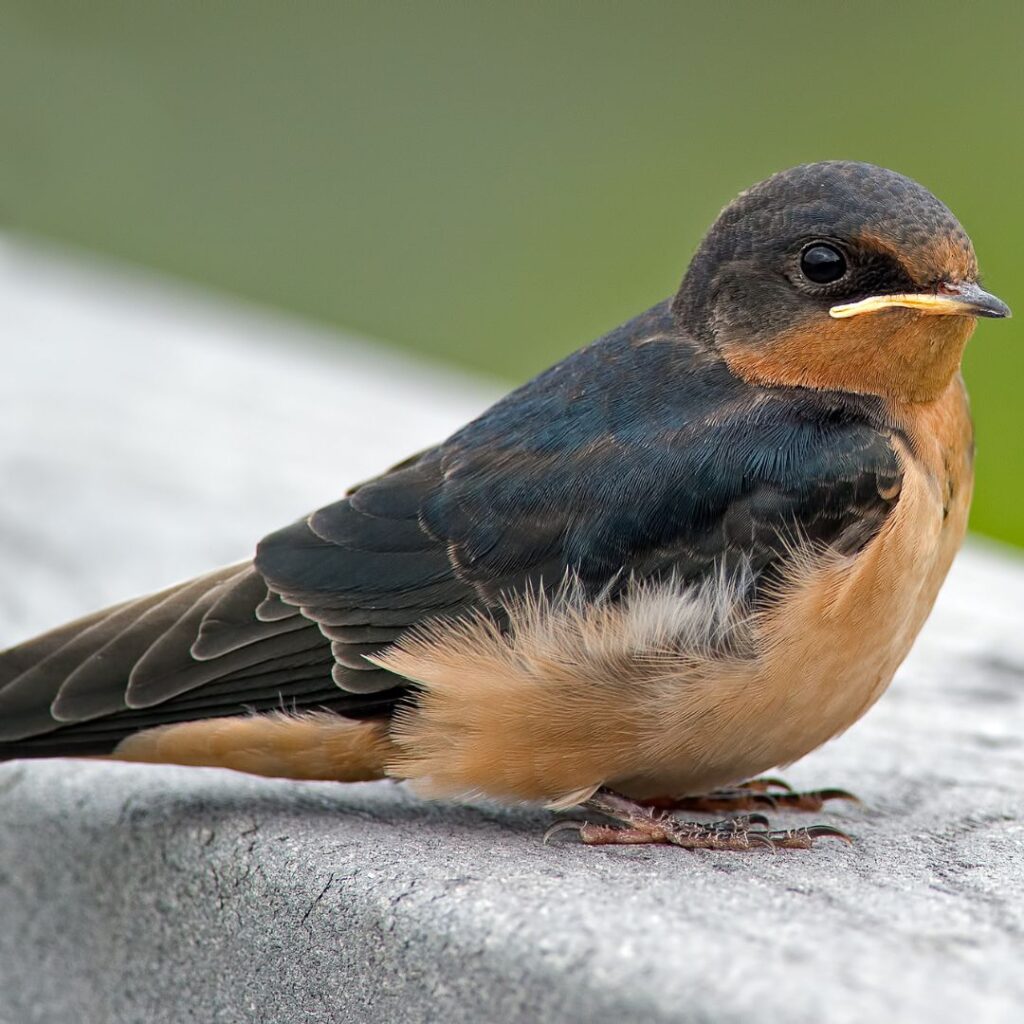
Bluebirds
There are three types of bluebirds that live in North America. They are the eastern bluebird, the western bluebird, and the mountain bluebird. All three of these species enjoy eating insects, and they also love to sing!
The term “bluebird” refers to any one of three species of birds. What all three have in common is that they love to eat insects! In fact, they will only eat insects during springtime, so you can invite them into your garden to help with pest control.
Bluebirds prefer wide areas of open grass space with scattered branches, shrubs, and other areas for resting (aka roosting). They also like areas where they can freely find nesting materials.

Cardinals
Attract Cardinals to Your Backyard
Cardinals are ground feeders and prefer to nest on bushes. You can attract them to your backyard by providing a variety of food options, such as black sunflower, safflower, and peanuts – their favorite forms of seed food. Cardinals will also perch on bird feeders if they are long enough, but avoid birdhouses.
In addition to seeds, the Cardinals consume 30% of their diet in insects So it’s no surprise that they are considered some of the best pest control agents around!
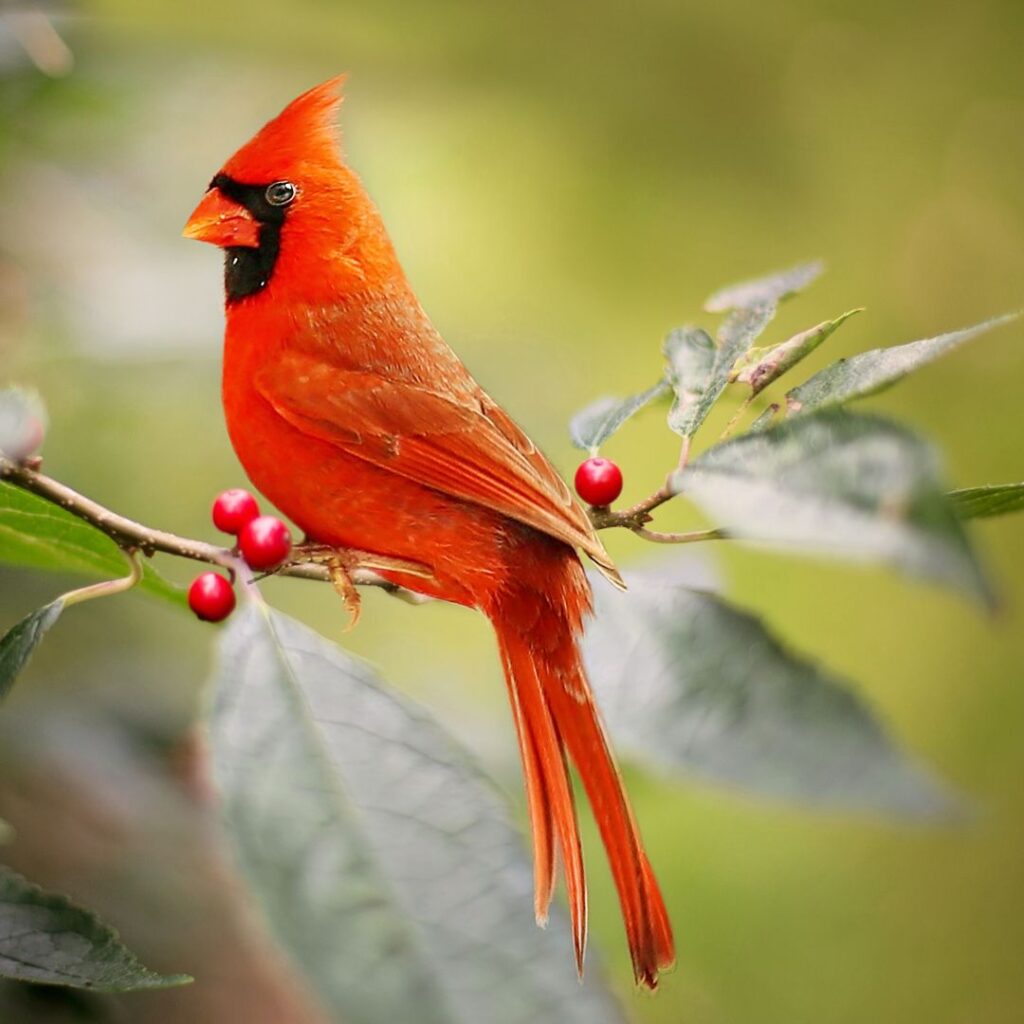
Chickadees
Attract Chickadees to Your Backyard
Chickadees consume the majority (almost all) of their diet in insects during the summer months. In the winter months, they still consume almost half their diet from the insect population.
Chickadees are a bird that is often seen in North America. There are several ways to attract them to your backyard. Chickadees eat a lot of high-energy food.
Offer berry-producing bushes for your backyard birds during the winter months.
Chickadees are cavity-nesting birds, so you can put out a couple of chickadee-specific bird houses to encourage them to nest in your backyard.
Offer a platform feeder filled with peanut, sunflower, and dried blueberries.
In addition to their natural diet, chickadees love suet and peanut butter.
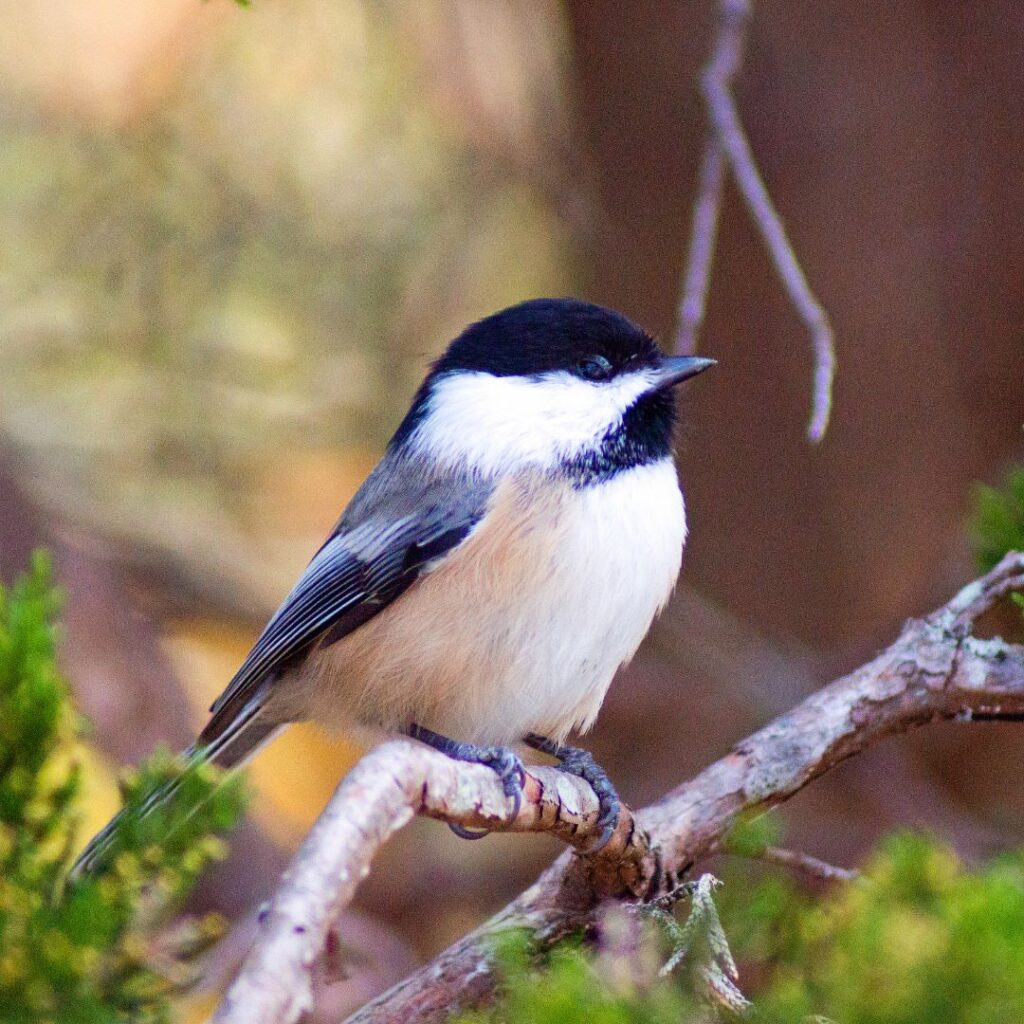
Grosbeaks
Attract Grosbeaks to Your Backyard
If you want to attract Grosbeaks to your backyard, you should:
Provide a good perching space with seeds scattered around.
Offer a variety of nuts, seeds, berries, fruit, and insect-loving plants.
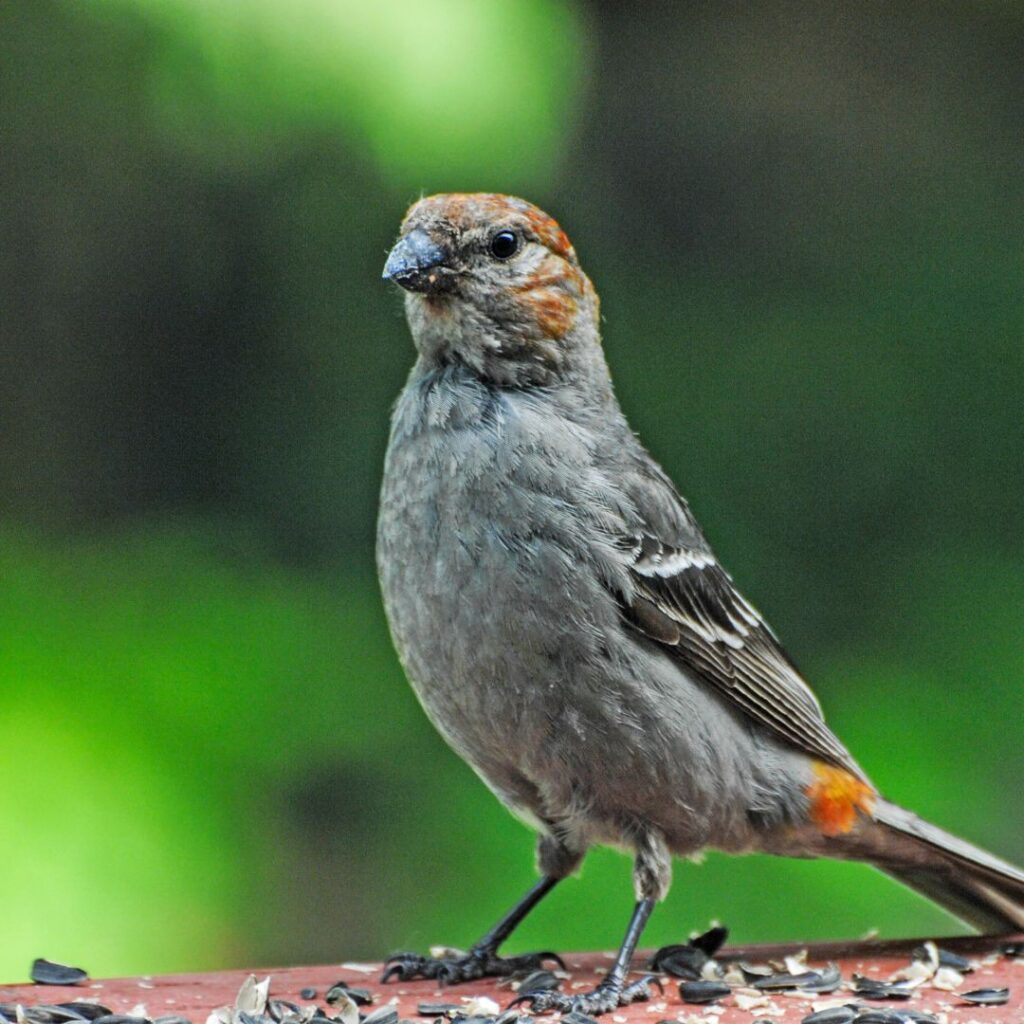
Hummingbirds
Some Plants for Hummingbirds
Hummingbirds can eat several thousand mosquitoes a day.
A clean, fresh hummingbird feeder is always a good idea in any yard.
Plants for attracting hummingbirds are those that provide food well as beauty.
Columbine, Daylilies, and bright colorful flowering plants are favorites of hummingbirds. Phlox is also great for landscaping because it has pretty flowers which will attract hummingbirds; these flowers come in colors such as pink, red, lavender, or white.
Hummingbirds are social creatures that migrate to warmer locations during the colder months.

Nuthatches
Attract Nuthatches to Your Backyard
This bird gets its primary source of food and nutrition from insects. They will seek out more than mosquitoes by hunting through trees and shrubs for these.
Nuthatches are a type of bird that can be found in North America. These birds are sometimes confused with woodpeckers. They have short legs and they move similar to a woodpecker on trees. They live in deciduous forests and are more likely to be found at woodland edges and in open areas with large trees.
White-breasted Nuthatches like to eat nuts, with and without shells and sunflower seeds.
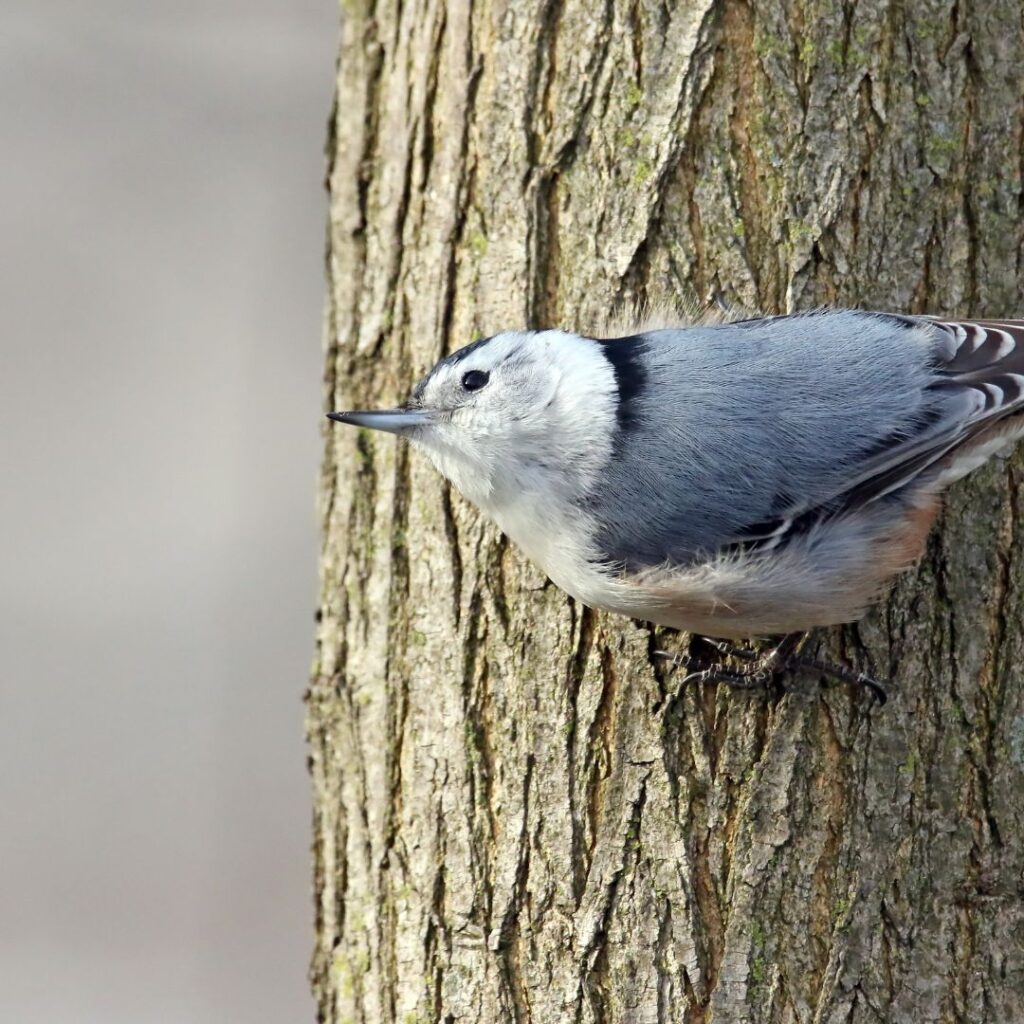
Oriole
Attract Orioles to Your Backyard
Orioles love consuming diets high in insects like mosquitoes as well as wasps (and more).
There are several things you can do to attract orioles to your backyard. Choose a feeder that has large perches and drinking ports, as well as a sugar-water recipe that doesn’t contain food coloring. Use our guide to attract hummingbirds to help you with this.
Orioles love oranges, so try hanging some from orange halves nearby your feeder. You can also offer grape jelly. Keep the feeder in a place where it’s easily visible from overhead. It takes a while for birds to establish a habit of where they feed so be patient!
Migrating birds are attracted to food and water sources, so have plenty of both if you want to lure orioles into your backyard all year long. These birds are quite beautiful and their sound is pleasing to listen to. You’ll not only have the benefit of their beauty but also fewer mosquitoes and other flying insects bothering you.

Purple Martins
There are a lot of benefits to having Purple martins as part of your natural backyard habitat. They love eating insects. They feed during the day. Their diet is mainly beetles, butterflies, dragonflies, horseflies, moths, and wasps.
So, if you’re looking for primarily mosquito eaters, keep in mind that 1. Dragonflies consume enormous amounts of mosquitoes and 2. Purple martins eat dragonflies. While still many benefits to attracting purple martins to your yard, mosquito-eating is not their primary diet.
Purple martins require a fresh, clean water source within 2 miles for bathing and drinking. They eat lots of flying insects, including mosquitoes and beetles but also go for larger insects like moths and dragonflies.
They are not particularly attracted to bird seeds. Having nectar-producing plants will provide more opportunities for insects and it’s the insect population that will attract your purple martins.
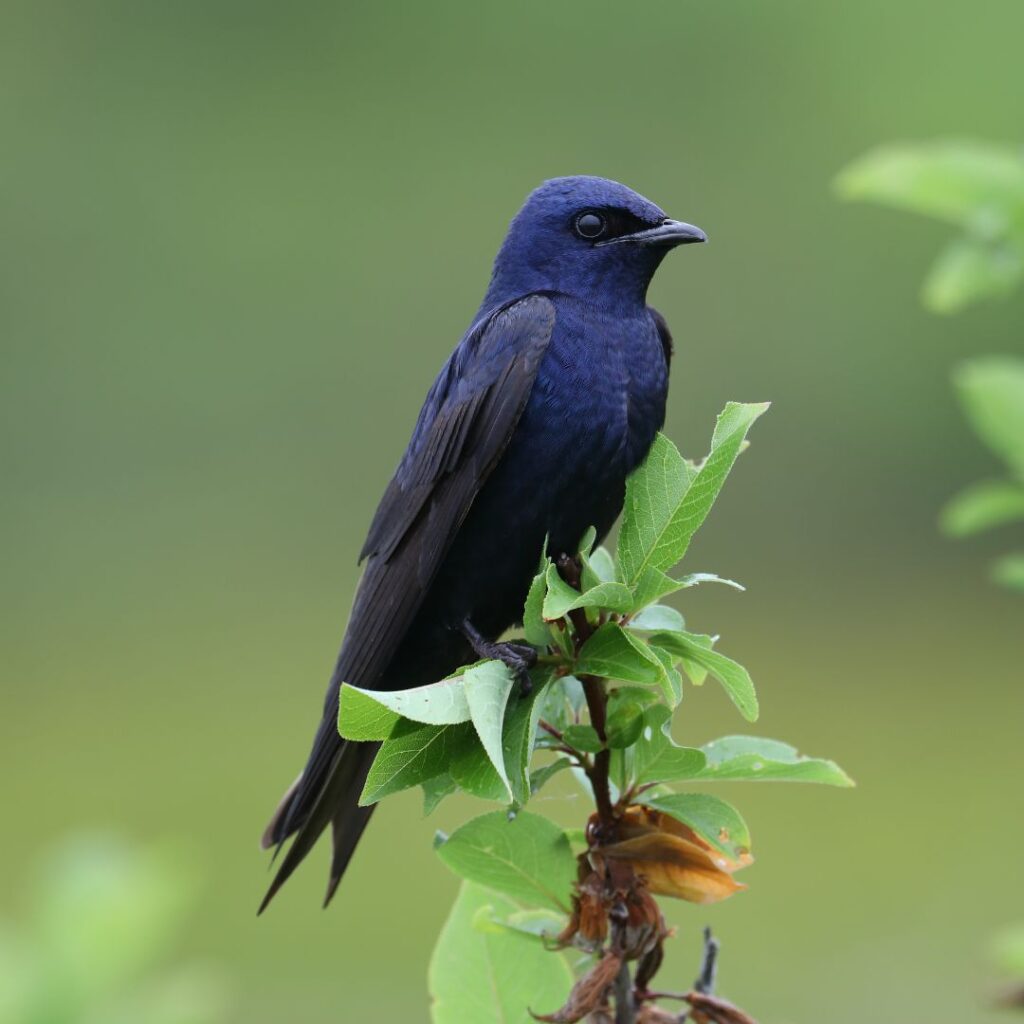
Sparrows
Attract Sparrows
Another small but great eater of mosquitoes.
Sparrows are granivorous, eating both seeds and grain. Think flower seeds, grass seeds, and small grains in general. Seeds should be offered directly on the ground in order to encourage foraging sparrows. Sparrows are low maintenance, with a preference for habitats near water and a need for nearby shelter. Sparrows will eat from bird feeders that offer small grains and seeds.
A heated bird bath will provide warmth even during the coldest months. Sparrows often nest near shrubs and trees; they can be attracted by a variety of feeders, including suet and protein-rich crumbs

Swallows
Attract Swallows
These birds eat large amounts of insects per day and play an important role in keeping our insect populations healthy. They enjoy mosquitoes, mosquito larvae, gnats, and flying termites as well.
Swallows are some of the most common birds in North America. In order to protect these populations, we need to provide a plentiful food source for swallows.
The grass should be large enough to allow the birds to skim over it while they feed. Water is imperative for these species, and they typically stay near natural water sources as these are areas attractive to mosquitoes and other insects. Swallows prefer open spaces and will often visit backyard bird baths or ponds for a cool dip. They also enjoy moving water, which could include an addition of a water fountain, mister in your yard, or as simple as a sprinkler.
They are attracted to flowers, in particular reds and whites but any bright color will help. Nectar-producing plants will attract insects, which is a sure way to get any mosquito lover in your yard. They also enjoy mealworms and suet.
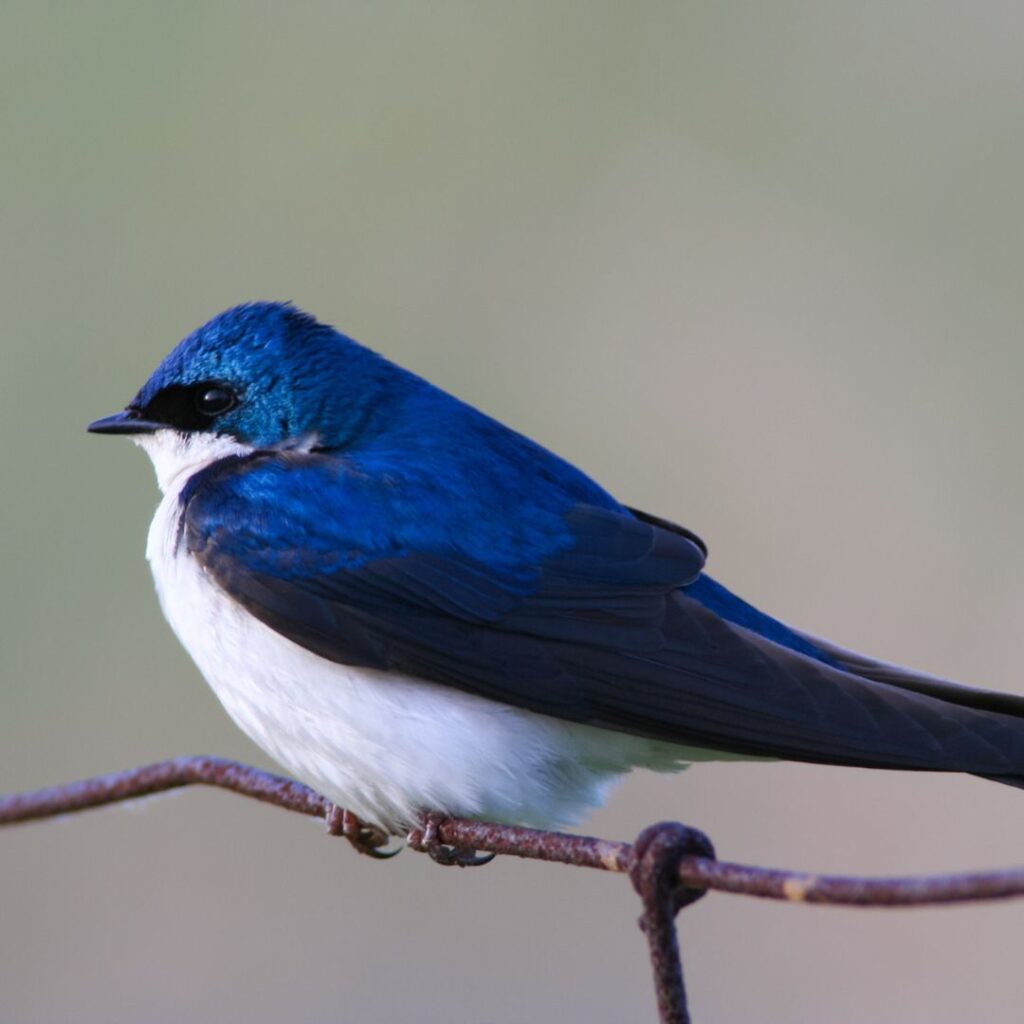
Titmice
Attract Titmice to Your Backyard
During the warm summer months, these birds feed primarily on insects and their eggs.
In the winter, provide a feeding station with plenty of perching space. This will give the titmice somewhere to eat without having to compete with other birds. They will feed on berries, nuts and fruit during the winter months.
It’s a good idea to also offer a suet feeder during the winter. Be prepared, they get devoured quickly, so stock up early (store in refrigerator or freezer!) so you don’t get caught without.

Warblers
How to Attract Warblers
Warblers eat mainly insects in the summer, and early fall. Examples are aphids, beetles, gnats, grasshoppers, and even spiders. Once the weather cools and wintertime approaches the warbler dines on fruits and berries.
Warblers are attracted to running water and birdbaths that drip water. You can also attract warblers to your backyard by providing food such as suet, but also poison ivy!
Warblers enjoy dense brush and ground covers. They also can be found foraging in wild grapes and their vines. These birds like brushy areas, overgrown thickets, coniferous and oak woods, orchards, and forest edges for cover.
Warblers aren’t known for feeding on bird feeders, so some carefully placed mealy worms, dried fruits, and even (like the oriole) a half orange hung up from a branch. Suet feeders are almost always welcome, although not as frequented by warblers as other birds.

Woodpeckers
Attract Woodpeckers to Your Backyard
Woodpeckers eat nearly all insects, especially ants, grasshoppers, mosquitoes spiders, and even termites. You can attract woodpeckers by placing any sugary mixtures and foods that attract insects. Other than that, you can leave live or dried mealworms on the feeders as they also like that. Woodpeckers are frequently seen on suet feeders as well.

How Effective Are Mosquito-eating Birds?
Mosquito-eating birds are a great way to lower your risk of contracting a mosquito-borne illness. However, it’s important to remember that these critters need to eat a wide variety of bugs in order to be effective, meaning that they have limited effect on epidemics in severe infestations.
There are natural predators that help to keep mosquitoes down, and the use of pesticides has been found to cause more harm than the effects of these predators. So before you go out and purchase a case of pesticides be sure to understand the negative impacts you could have on your environment!
Which Bird Eats The Most Mosquitoes?
This is a pretty debatable question. It depends on where you live, your natural habitat, and the birds you can successfully attract to your yard. The best mosquito strategy is to attract birds that are low flyers, water lovers, and nectar feeders.
And The Winner Is!! The consensus time and time again has been that the Purple Martin bird is the number one consumer. Close runners up are the bluebirds, Downey woodpeckers, red-eyed vireos, sparrows, and yellow warblers.
Migratory swallows and songbirds are known to eat large quantities of mosquitoes. In fact, these types of birds consume more mosquitoes than any other type of bird.
Even though bats are often thought to be the best mosquito predators, they only eat about 10% as many as Martin birds do. This is likely because there are so few bats in comparison to the vast number of Martin birds present throughout North America.

Dragonflies
Dragonflies are super eaters. They consume thousands and at an incredibly fast rate.
Dragonflies are fascinating creatures that have been around for centuries. They’re able to hover and zip around due to their elongated bodies, and they can eat mosquitoes! In fact, dragonflies have been eating pests for 325 million years.
You may be surprised to learn that dragonflies date back thousands of years. They appear in ancient rock art and pieces of pottery. If you’re lucky, you have them flying around your yard!
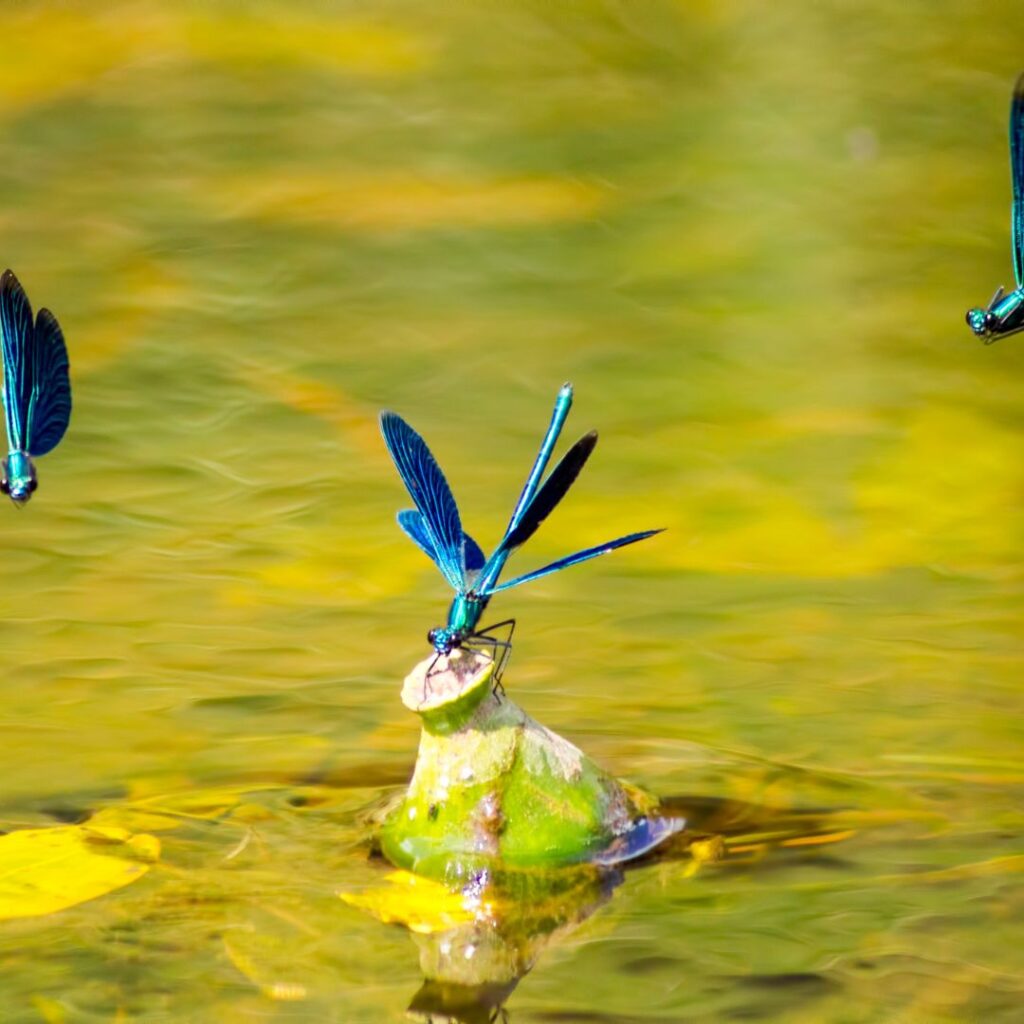
Bats
Bats have gotten a lot of bad press, with people thinking that they are dirty and carry diseases. Now we’re talking about bats that know their place. Bats outdoors, not the pesky critters that find their way into your attic!!!
Bats are very beneficial to the environment and can play an important role in controlling insect populations.
For example, little brown bats consume mosquitoes more than previously thought. A recent study found evidence of mosquito consumption in over 70% of guano samples from little brown bats. This means that bats can make a significant impact on reducing the number of mosquitoes in an area.
In addition to eating mosquitoes, bats also help control insect populations by eating larva. By creating garden habitats and conserving natural areas, you can encourage bats to live in your area and help reduce the number of mosquitoes biting you and your family.
They play a key role in controlling the mosquito population, which helps to reduce the spread of disease.
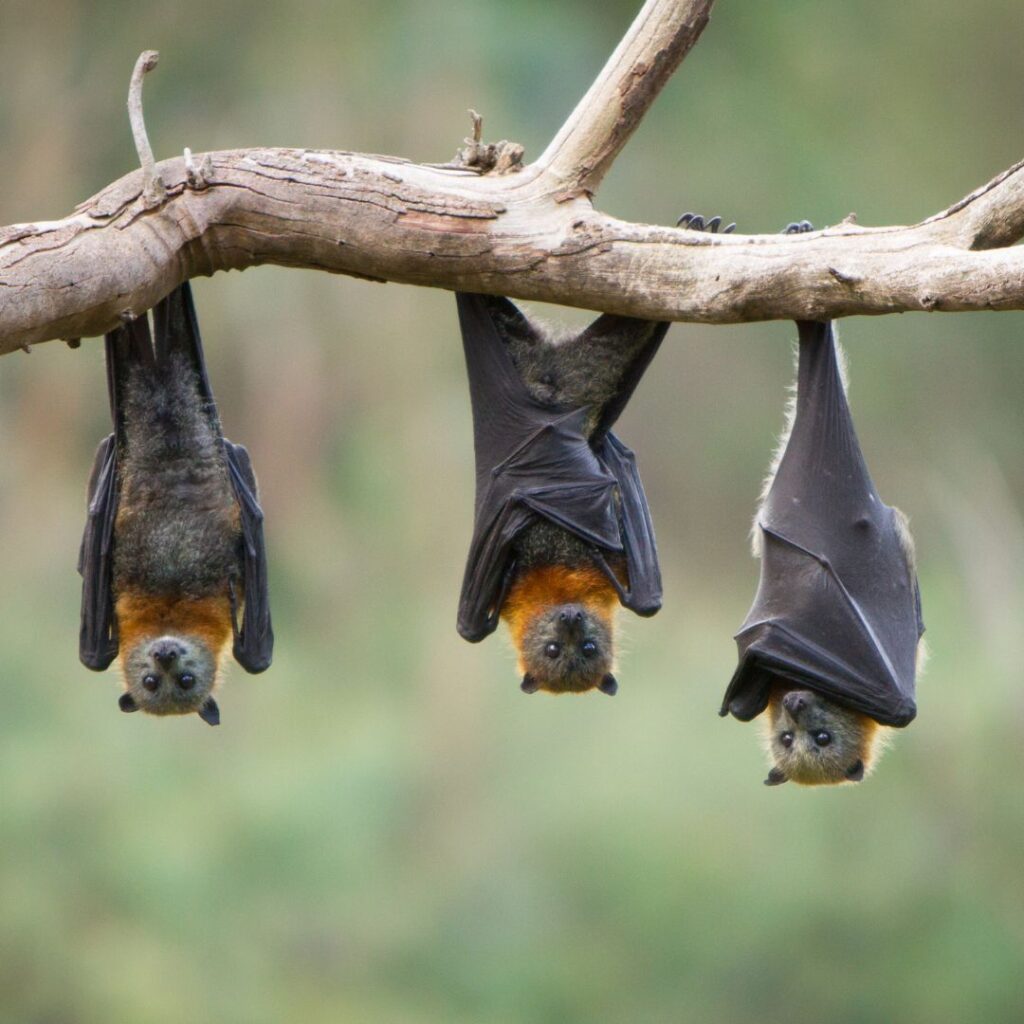
Frogs Eat Mosquitoes
Frogs are natural predators of mosquitos and will consume them whenever they have the opportunity. Adult frogs eat insects that they catch with their long, sticky tongues.
Frogs are especially voracious mosquito eaters when they are young. This is because young frogs and mosquitos compete for the same resources, such as food and shelter. Mosquitoes provide an important source of nutrition for young frogs, so they will actively seek out these pests to devour them.
Tadpoles, however, are not eaters of the insects themselves but of the mosquito larvae.
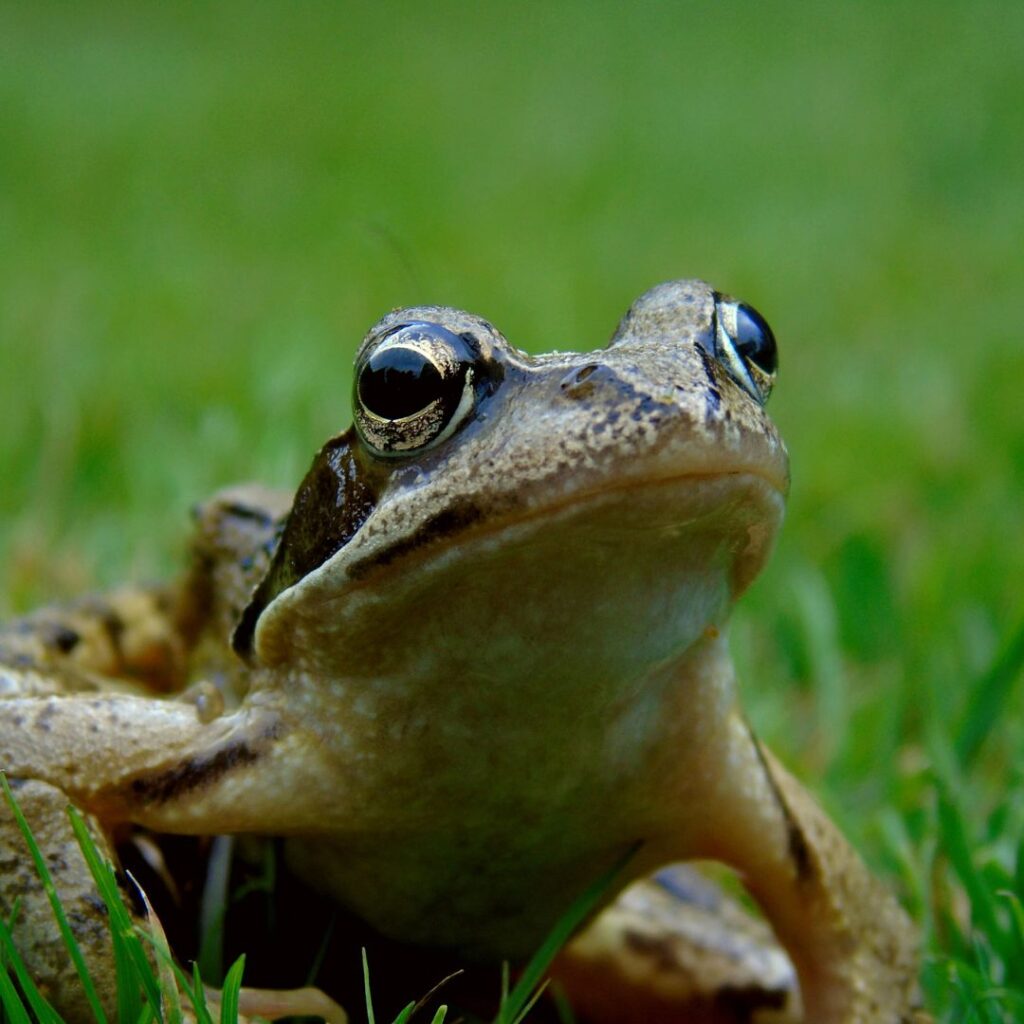
Spiders Eat Mosquitoes
Mosquitoes are pesky insects that can ruin any outdoor activity. They’re also known carriers of diseases, as we’ve discussed earlier, like the west nile virus, equine encephalitis, and Zika virus just to name a few. Thankfully, there’s another natural way to keep mosquitoes at bay: spiders!
Spiders love to eat mosquitoes and will make short work of them. In fact, all spiders eat mosquitoes, but some do it more than others.
If you want to keep your backyard free of mosquitoes, consider leaving some of those spider webs you see in branches intact! The webs help spiders capture their prey. Not only will they help control the mosquito population, but they’ll also be great additions to your garden ecosystem.

Other Ways To Keep Mosquitoes At Bay
There are many ways to keep mosquitoes from bothering you. For example, you can use Deet to help prevent them from hanging around your yard in the first place, and then you won’t have to worry about them coming into your house.
You can also wear devices that will keep mosquitoes away, such as hats with nets or clothing with special chemicals. There are plants that can also help keep mosquitoes at bay, and they’re sold in stores.
Another way to protect yourself is by avoiding bright colors while outdoors at night–mosquitoes are attracted to light just like moths are, so if you want them to stay away from your house and family, it’s best not to dress up like a Christmas tree. Burn citronella candles or any type of mosquito candle sold in stores–the smell will help repel the insects that may have come inside the house through windows or doors.
Mosquito larvae are attracted to bright colors and certain types of soap; if you want to avoid getting bitten, try using a bland type of soap and finally emptying standing water whenever possible.
Looking for ways to attract more birds to your backyard with natural landscaping? Read this article.
Final Thought
Mosquitoes are a nuisance and there are a lot of ways to reduce their presence. Always wear protective gear when outdoors, such as repellent and insect-repellent clothing. Backyard birds can eat mosquitoes, but they won’t be the total solution to the mosquito problem. There are many ways to keep mosquitoes less bothersome in your yard–the birds will be a great help!

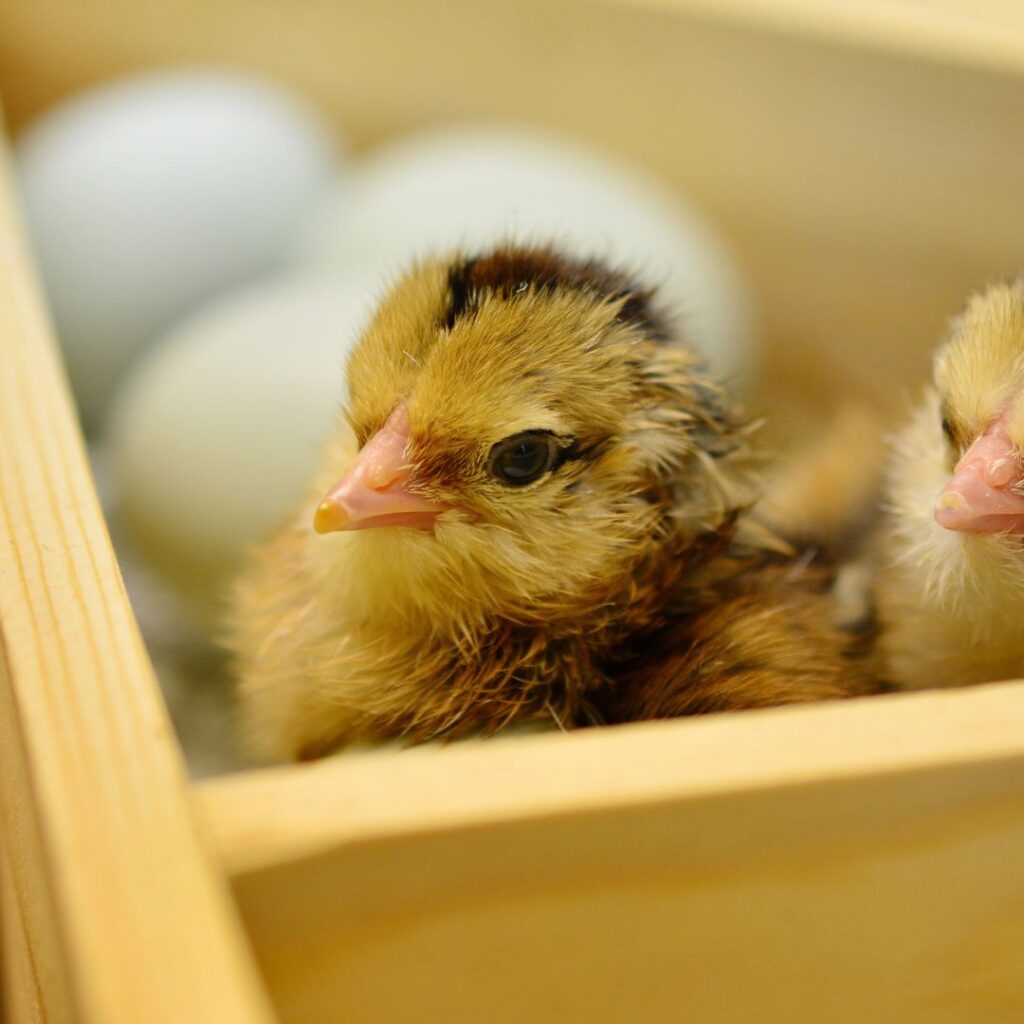
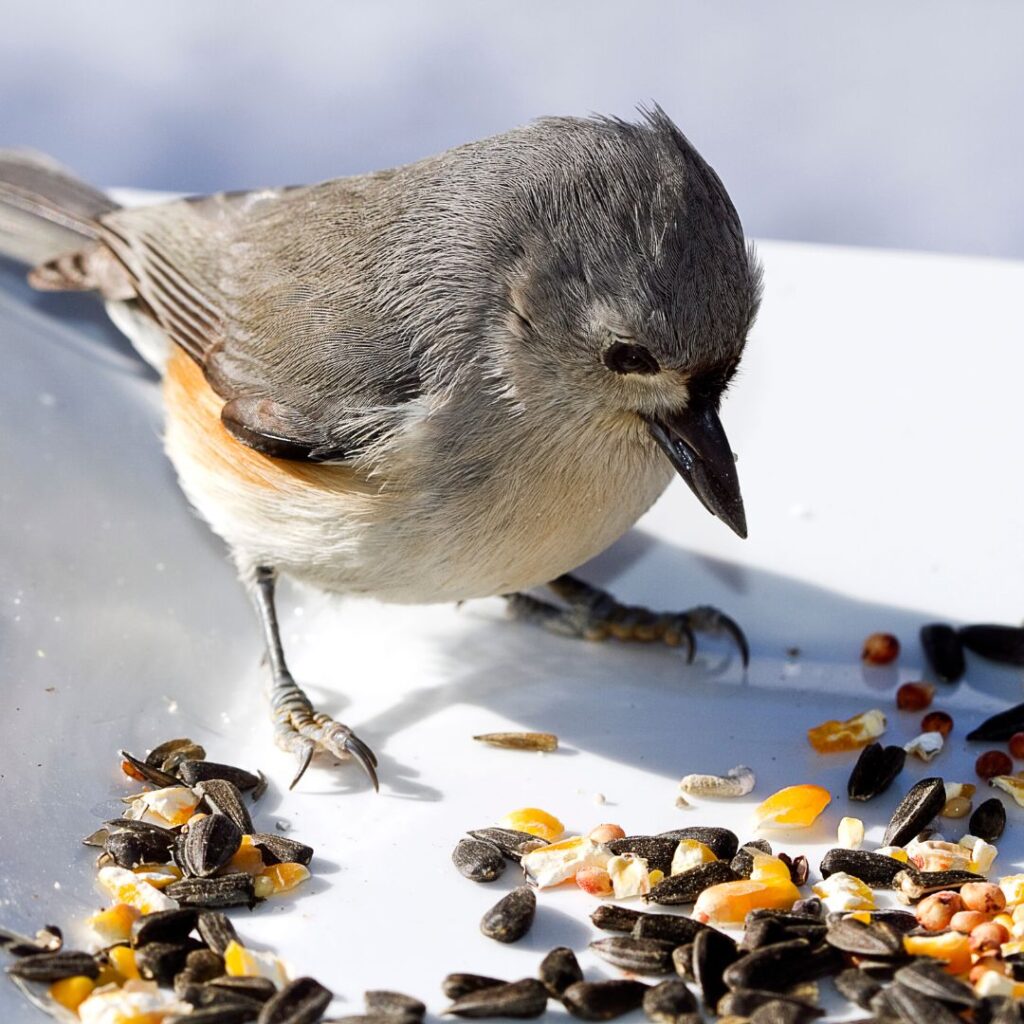

Pingback: 16+ Plants That Attract Birds To Your Garden - Gilmore's
Pingback: How To Attract Hummingbirds To Your Yard in 2022 - Gilmore's
Pingback: Plants That Can Poison Your Pet at home - Gilmore's
Pingback: Best Garden Tools for the New Home Owner - Gilmore's